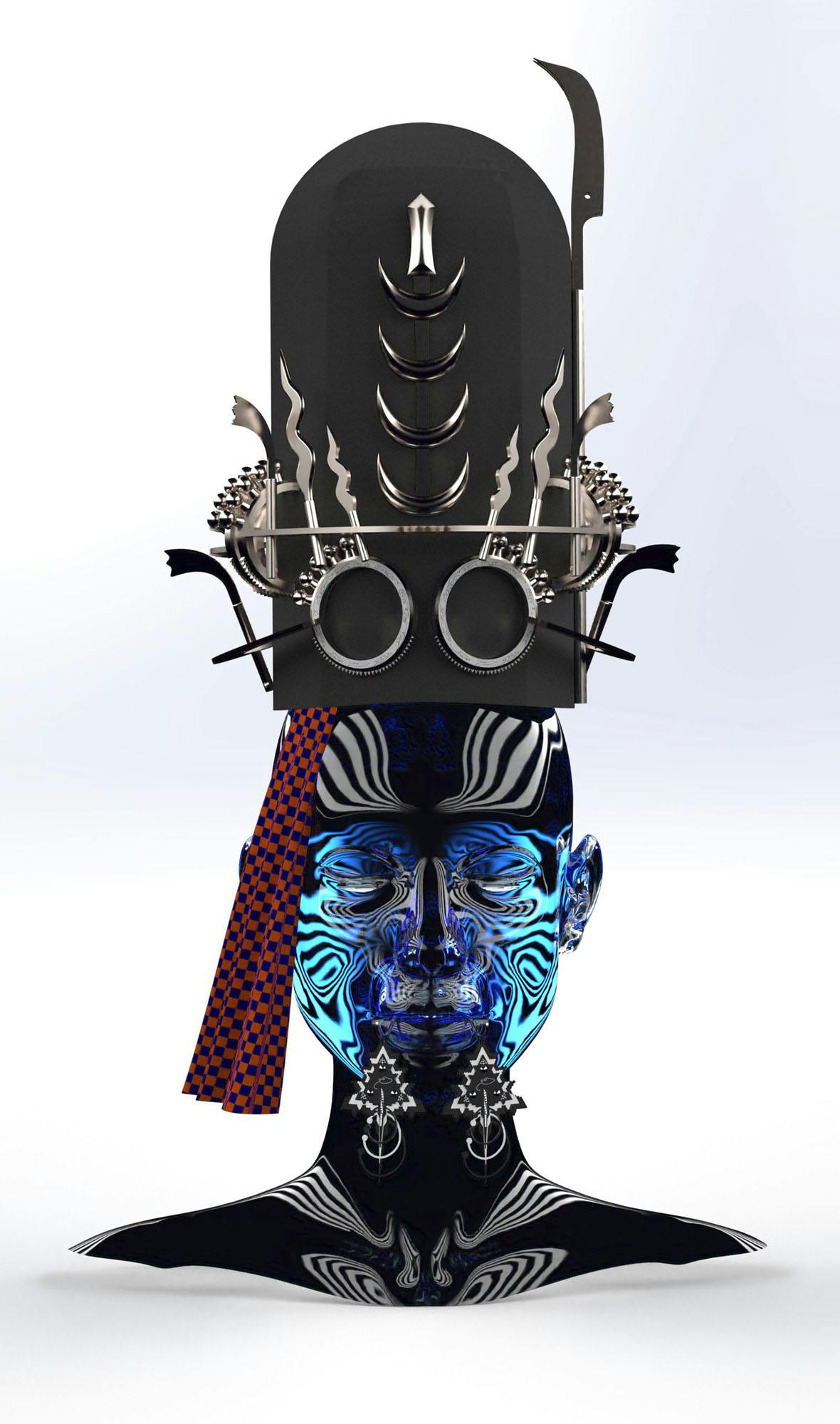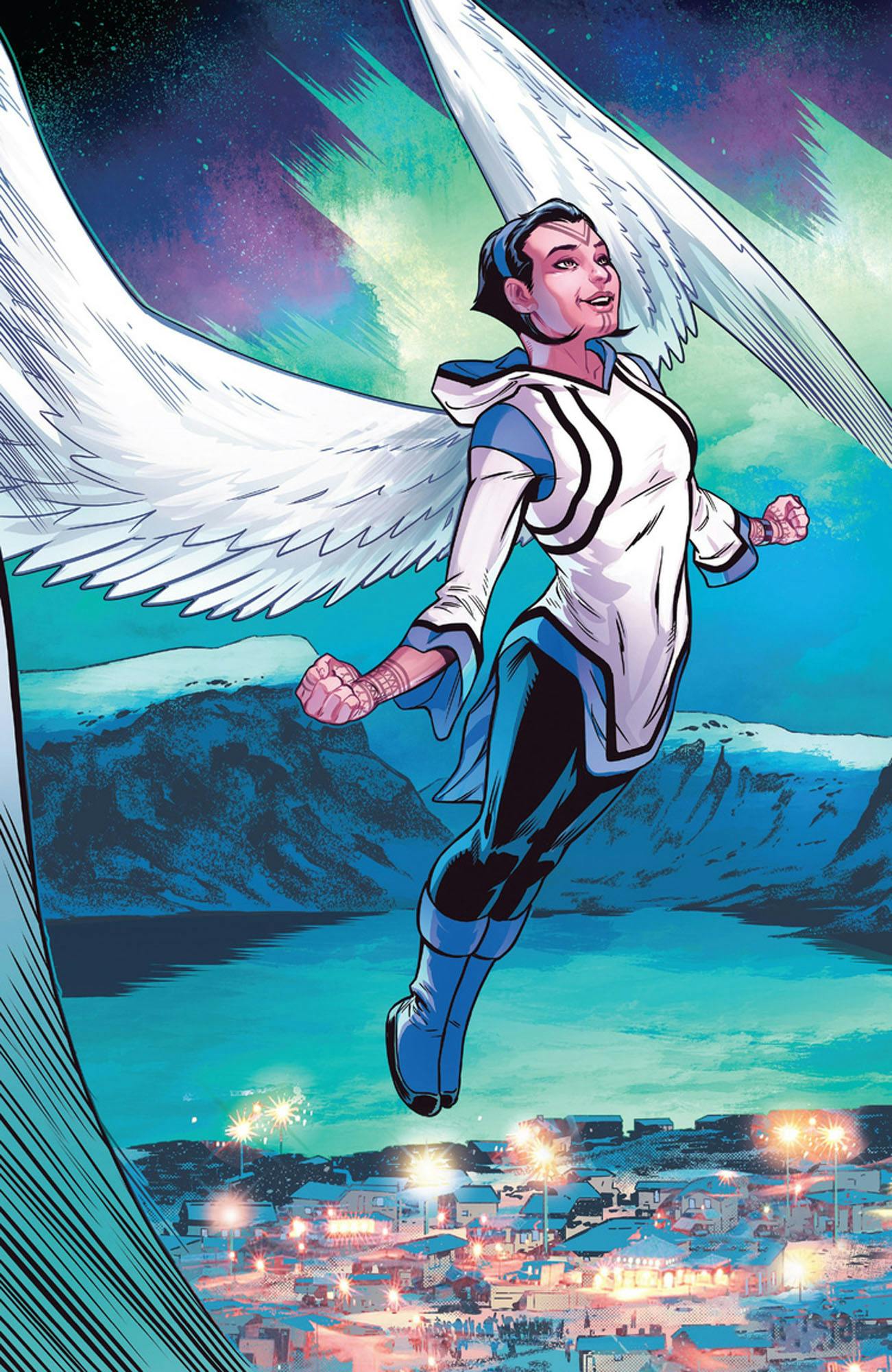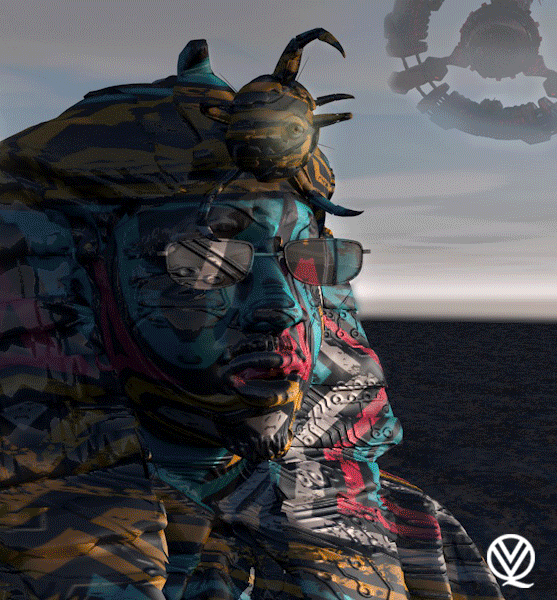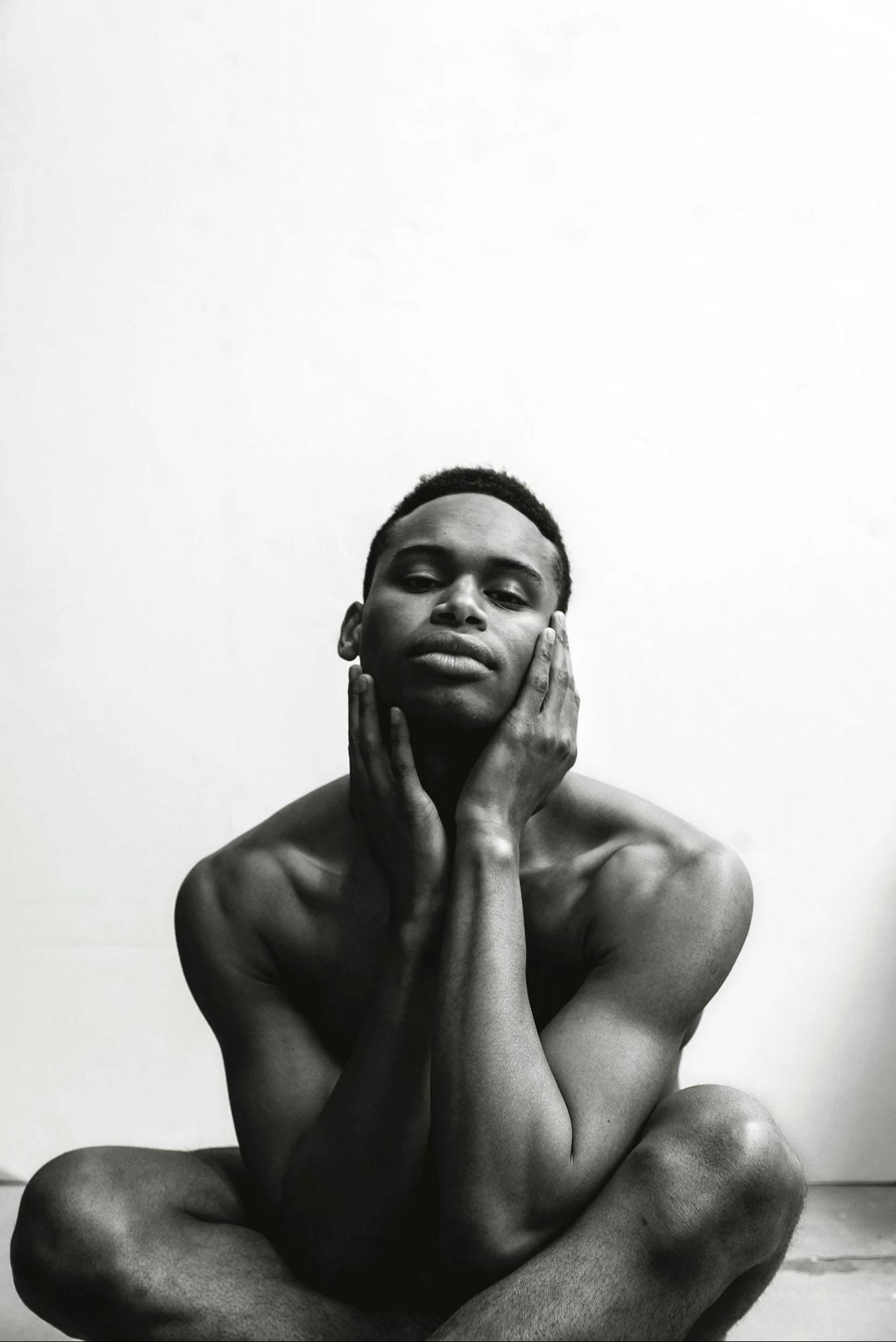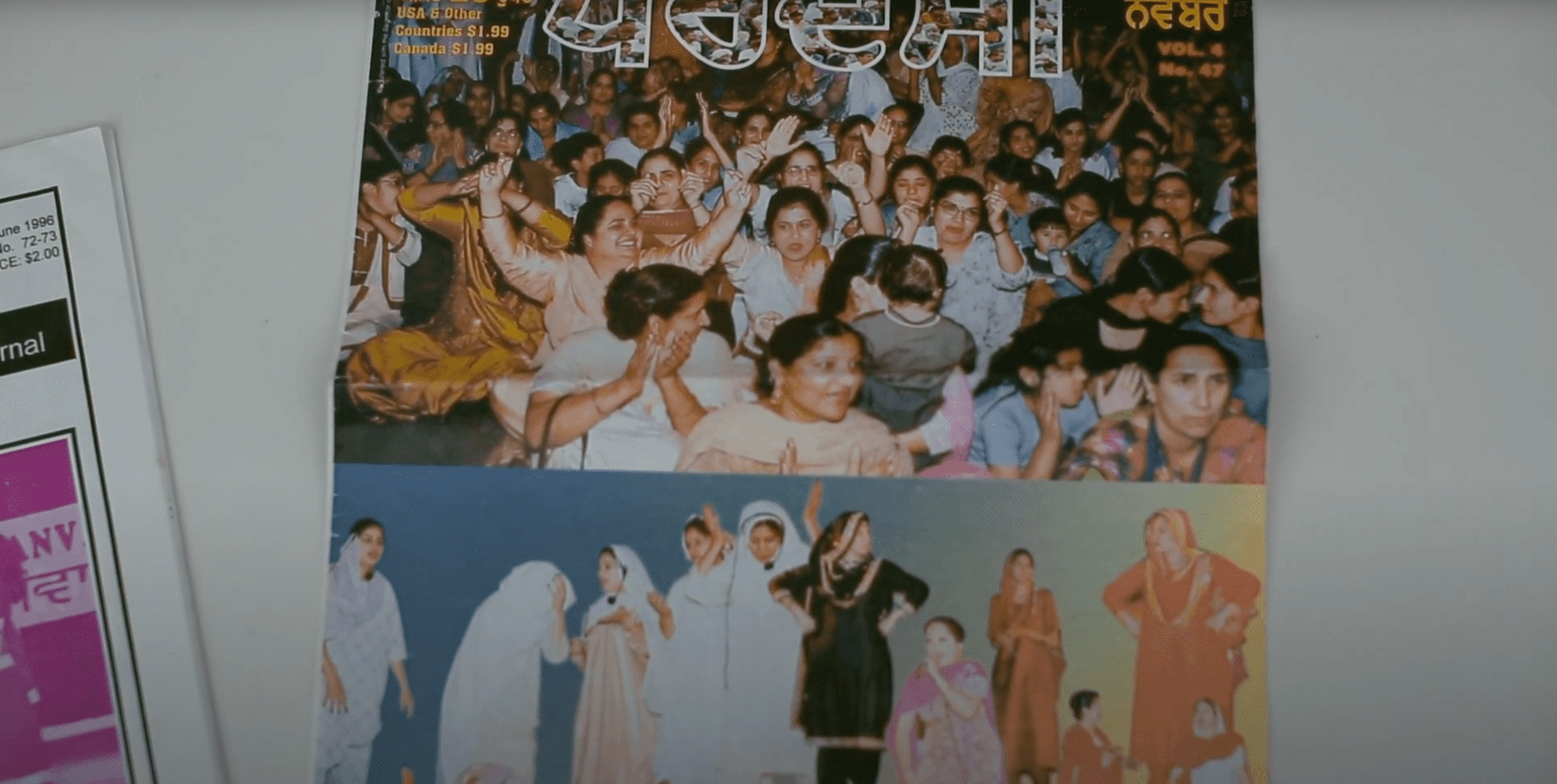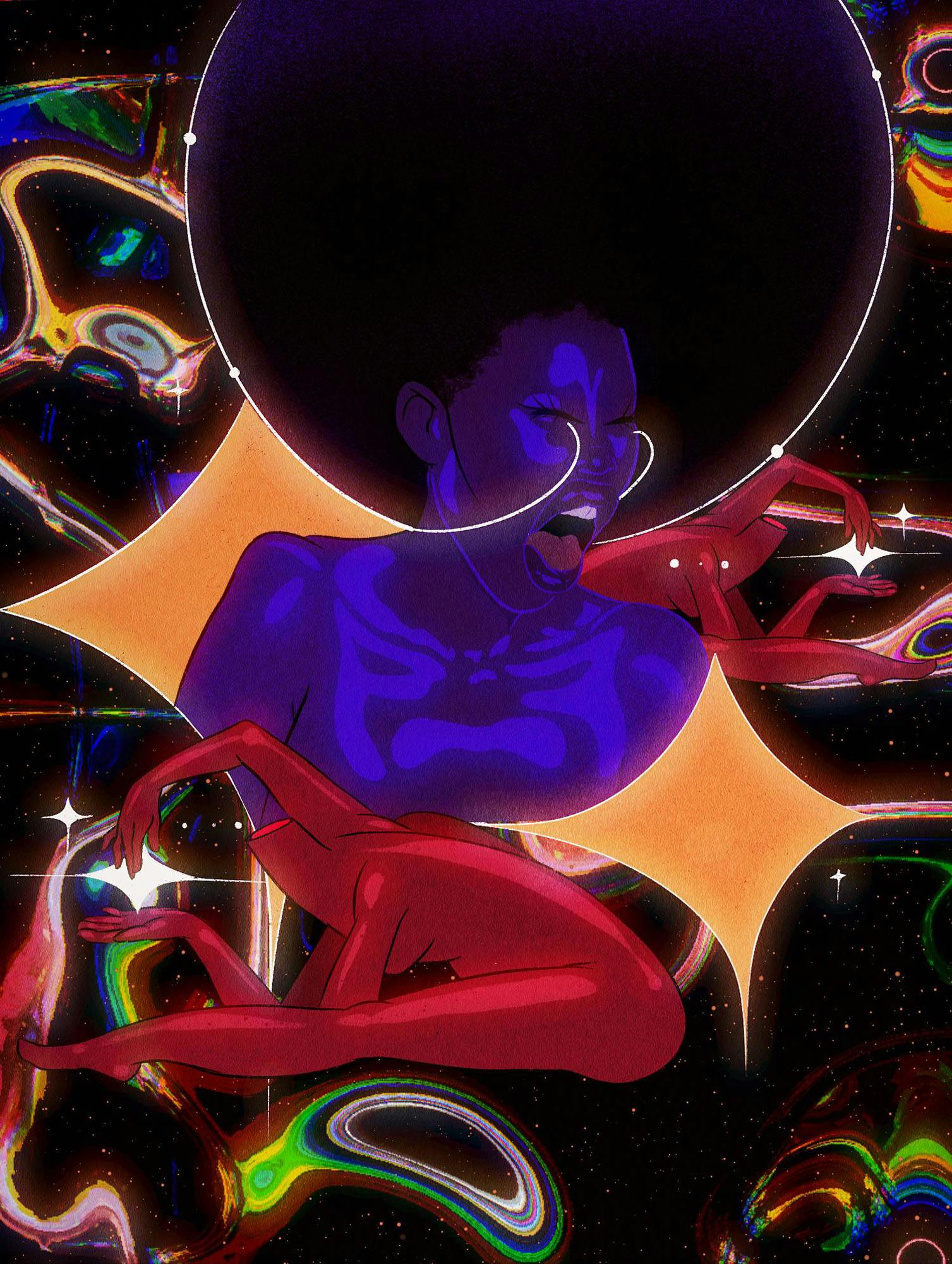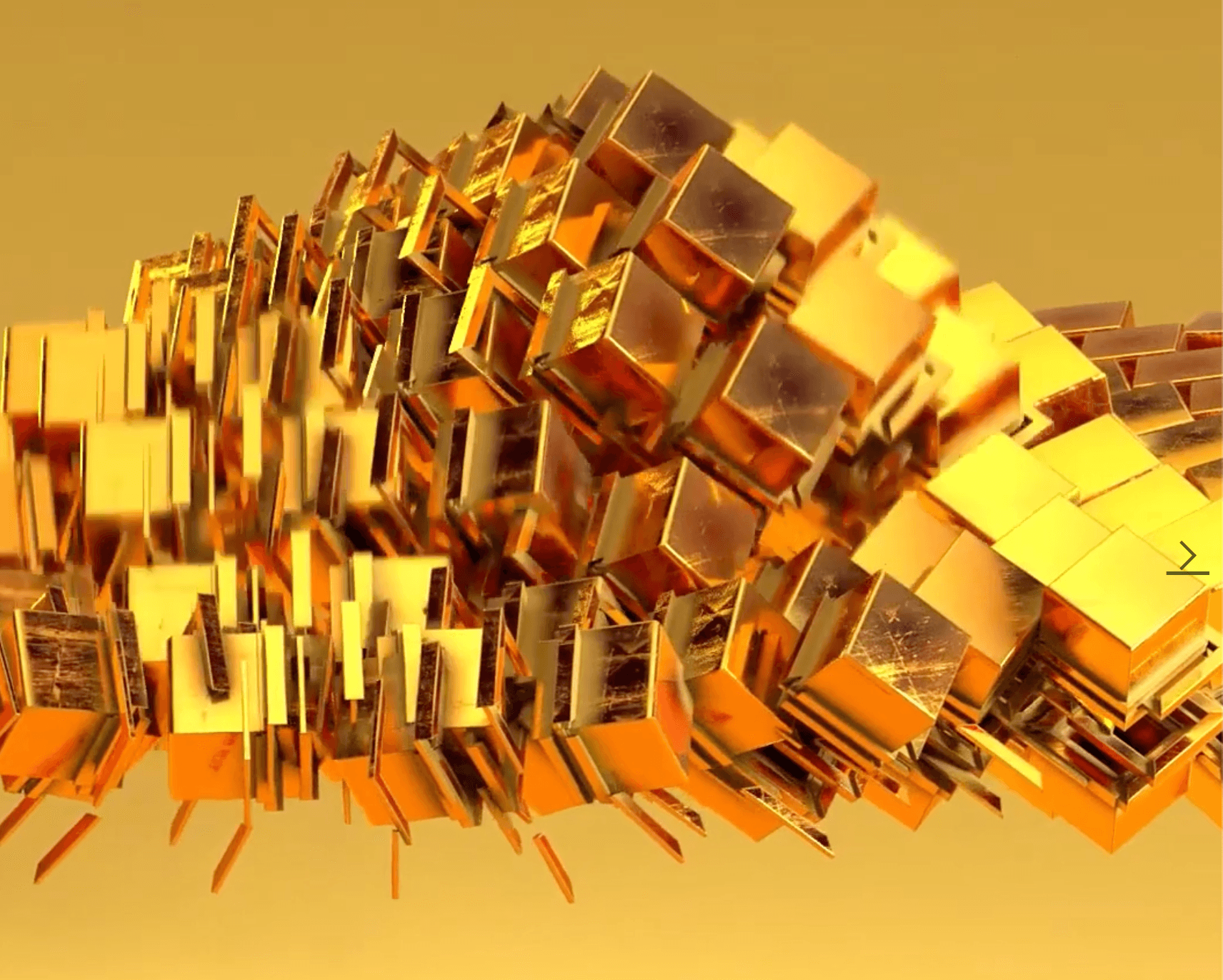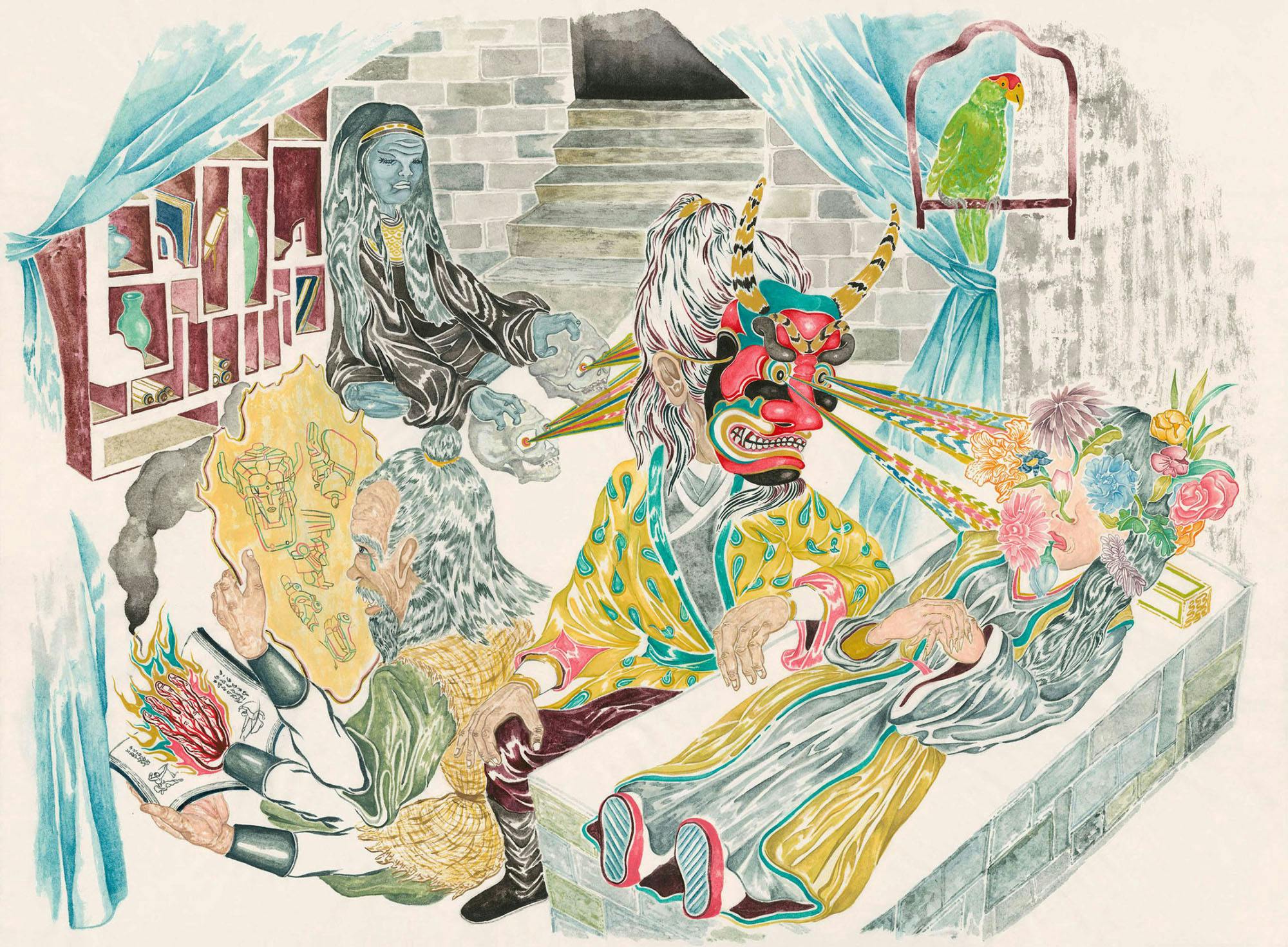
Many things are lost when we migrate from one place to another. The magic, the folklore, the mythology that we unconsciously bring with us to the new societies we live in, keeps some of the memories alive in the diaspora. This piece explores what is found inhabiting in Howie’s imagery and worlds.

Hana
How has fragmentation through migration, memory, and nostalgia influenced your work and identity?
Howie
I reconsider and reassemble synaptic fragments in my work to try and locate an identity that has been careening along a convoluted path. There is a lot of residue from here and there, and I try to make sense of it, or determine how these fragments of diverging experiences have informed my instincts as an artist.
Hana
There is a clear sense of density and layers of constant collage and dissection in your work, how has this evolved through your artistic and philosophical processes?
Howie
This very much relates to the previous question around fragmentation and identity. 15 years ago, I was making collage-based portraits to convey the sense of compounded identity inherent to immigrant experiences. It was only after returning to Hong Kong after 25 years in 2010, I realized the unconscious mechanics behind my compulsion for creating hyper-dense, maximal and layered kinetic picture spaces. Those were the streets and escalators that I walked on as a child, as I was making sense of the world through eyes processing a torrent of signage and lights, of moving people and faces, of produce and writhing seafood, all exponentially multiplied through reflections in windows and mirrors and aquariums. With that revelation and understanding, I can now just lean into it knowing where this tendency comes from, opposed to feeling insecure that my instincts don’t fit within a stark and calculated conceptual art hegemony. I just accept that my steez is that ‘chop suey’ style. Whereas the ‘chop’, in Cantonese doesn’t mean cut at all. It means ‘random assortment’. So ‘chop suey’ actually translates to “Assorted Shards”. Good exhibition title!
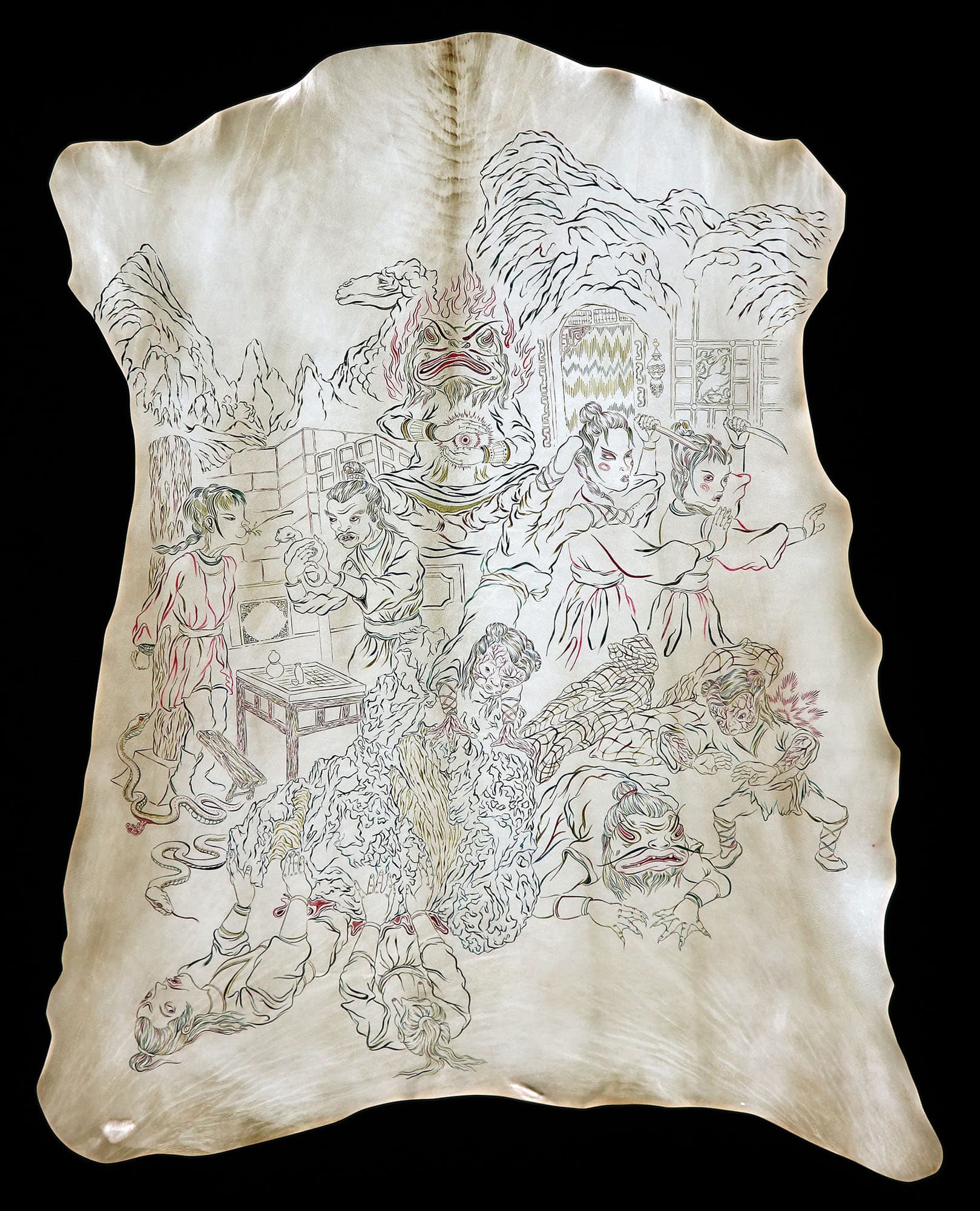
‘the peel, the bark, the tome’
(White Camel Mountain),
acrylic ink on goat parchment
in lightbox, 54” x 42”, 2019.
Hana
In your past works, you have explored the power of fear through media, mythology, and pop culture that we consume unconsciously as an extent of the political structures of the societies we live in. How does one take agency over fear, and use it instead, as a tool for understanding and navigating the world in the context of contemporary art today?
Howie
My approach in the past was to disarm fear via gross exaggeration within the genre of horror. Growing up, my family placed a lot of positive value on exaggeration and tangential elasticity. So I applied an absurdist approach to my works around fear, which was informed by mou lei tau (冇厘頭 ) – a genre of nonsensical humour that was popular in Hong Kong between the late 70s to 90s. However, I am not sure if I was genuinely confronting fear so much as hoping I could laugh it away. These days, fear needs to be confronted and the source of that fear needs to be dismantled.
Hana
You have mentioned an interest in the concept of Kawaii noir in your work, specifically during your university years, could you expand more on this?
Howie
For that series I utilized both candy-coloured and cute figures as a facade to question where our dark, innate impulses come from. I purposefully depicted child-like figures through research around ‘neoteny’ – or the retention of juvenile traits. I was interested in how our brains are biased and wired with a predilection towards entities with proportions similar to toddlers (big head, round bodies, stubby limbs) or puppies, etc. This form of figuration was ubiquitous in anime character design such as Dr. Slump by Akira Toriyama – a series that I grew up watching. I was also attracted to how this cute or kawaii figuration was utilized as a form of soft power, when Japan was working to improve its global image after WW2 through cultural production. I wanted to employ this bias towards the cute, while depicting rather harmful scenarios to ask “what drove us to burn off a grasshopper’s head with a magnifying glass.” The cruelty inflicted by the kids in the series asks whether these same kids are doing the same cruel things as adults. I must admit I was reading about torture experiments conducted by a unit in the Japanese army during WW2 around that time and I wondered how humans can have the capacity to be such monsters.
Hana
You incorporate a diversity of traditional Japanese Shunga art and Manga into your work. Historically, one can see Manga (in particular Anime) as an art form that processed many of the events and emotions of post-WW2 in relation to new worlds, the devastation of the atomic age, and future identities. How do you think contemporary art will change after the pandemic we are facing as a global society today?
Howie
I’m not much of an art forecaster. It seems like there has been some much needed focus placed on art that can impact social change. Also, the representation of voices on the periphery of a ‘center’. Is there a way to de-escalate the hyper-polarized screaming match?
Hana
Much of your art delves into historical fables, the supernatural, and Buddhist folklore. Demons, angels, and spirits are often found inhabiting your imagery and worlds. In Asia, these characters and myths still hold a superstitious position in daily life. Do you feel a disconnect to these elements living in Vancouver?

‘Parallax Neon (White Camel Mountain)’,
edition of 3 (2 + AP),
Kodak Professional Endura
print on transparency film in
lightbox, 54” x 42”, 2019.
Howie
The nostalgic trigger to delve into the supernatural was through the film Mr. Vampire (Ricky Lau, 1985) which was positioned around the Taoist belief that hungry ghosts arise from people whose deaths have been violent or traumatic. The view is that when one dies but lacks closure or peace, they may stubbornly hold onto that last breath. That breath festers in the corpse and given the right conditions (in the case of the film, inauspicious burial location), it can arise and seek vengeance from living family members. This connection between ‘hauntings’ as a byproduct of lived trauma inspired me to develop my Horror Fables series. The Vancouver edition took place at Centre A through a residency and exhibition, curated by Makiko Hara. For that project, Celestials of Saltwater City, I conducted research with Chinatown elders and artists with ties to the neighbourhood. I asked them to generously share stories around the supernatural or superstitious, and at times painful accounts of trauma resulting from migration, assimilation and discrimination. It was a formative project where I had the opportunity to interview heroes like Ken Lum and Paul Wong. Through that experience, and given Vancouver’s dark history ranging from the anti-Asian riots, the Komagata Maru, the erasure of Hogan’s Alley to the current overdose crisis, I frequently sense unsettled energy here. So in a way, I still feel quite connected to the supernatural here. The residue of pain lingers and a glass tower or a microbrewery can’t wash it away.
At home, I sometimes pass on folksy beliefs onto my kid. For instance, if he’s eating rice and about to leave the table with chopsticks stuck into his rice vertically, I tell him “don’t do that, put it sideways across the bowl.” In my household growing up, if your chopsticks stick up, then it looks like incense. Incense is associated with death and offerings to the dead, which is not good vibes at the dinner table. I went to Victoria one time and saw a public art piece (Avocados by Illarion Gallant) which was a giant avocado with two chopsticks stabbed into the nut, the seed. They were shooting up like an antenna. I was stunned that public money actually went into erecting a talisman for bad luck. It’s just sitting right in front of the fanciest hotel in Victoria, right on the water. You could Google it, it’s hilarious.
Hana
Your work is not only a reflection of the past and its political structures, but you also seem to reflect and speculate about the future consistently. If you could travel to any point in time where would you go?
Howie
I would entertain the scenario where my family did not leave Hong Kong (HK) for Canada in 1984. I would like to witness that parallel universe. Hong Kong from 1985 – 1997. We were only able to maintain a tether to Hong Kong via all these VHS tapes that we received. The screening of a new stock of HK movies and TV shows in our basement in Thunder Bay was a family ritual. But instead of seeing HK as represented through film during the era, I wish I could time-travel and be in the city during that period. Was it as romantic as I imagined it?
Hana
Hong Kong has faced a prolonged and complicated history of colonization from the handover of 1997 and now mixed political agendas of a second handover set for 2047. In many ways, there has been a turbulent relationship with regards to generational trauma. How do you see these events influencing contemporary and critical art coming out of Hong Kong?
Howie
Due to many factors, I haven’t been able to go back as much as I’d like and have a more intimate understanding of the climate there amongst the arts community. I look from afar, which I guess has always been my relationship to Hong Kong. I know during the protests last year, many artists prioritized contributing to the movement in any way they saw fit rather than conventional ‘art-making’ studio practice. Some question whether an artistic practice is frivolous and ineffectual in halting civic freedoms from vaporizing. Others believe that just the act of art-making is a gesture of support – just flex your humanity before the city turns into a pumpkin. I also can’t forecast this, but it would be a safe bet that a veil of censorship will drape across the skyline. Arrows will need to be asymmetrical and expressions will have to pass through a poetic filter for the sake of obfuscation.
Hana
Throughout the Pandemic, there has been an influx of digitization of art and new media. Have you found, during this time, that you would like to experiment with more digital forms of art or have you been drawn to more traditional mediums recently?
Howie
Well, pretty traditional. I’ve mostly been tending to my potted trees. I started practicing bonsai about five years ago and have used this strange time to work on them a bit more. It allows me to be outside and it helps with recalibrating temporal expectations given that it is such a slow process of nurture, deprivation, shaping and thought. It’s been a calming exercise amidst all the chaos swirling around.
Hana
As I mentioned previously, there is a density of material and ideas present in your work. Over the recent months, our digital culture has also transformed with the constant sharing of media and visuals at an almost overwhelming horror vacui effect of information. During these times, have you found yourself more meditative in your creative process or existential?
Howie
More meditative, I think. Been sort of finding ways to process everything and resist the urge for brash responses or knee-jerk reactions. All of this will come out in my practice at some point in an organic way. I certainly don’t want to spew something forced upon the world. I am listening.
Hana
Your work often retraces and speculates the history of cities, Hong Kong, in particular. I believe cities are like graveyards (or “layered tombs”), constantly re-plastered with generations of new memories and the material erosion of time. Your work has a fascination with spirits and ghosts. If you were a ghost, is there a particular city you would like to watch evolve and wander in the future?
Howie
I think instead of a city, I’d rather wander in a more remote place like a forest. I think I prefer an environment where change occurs at a slower pace. I’ve been gravitating towards things that change slowly, perhaps to counterbalance the velocity of shit that is hitting the fan. I just want to see a tree or a mushroom patch change over the seasons and not have to worry about the elements. Seems much more ideal than surveilling living people in a city or bearing further witness to gentrification and human development.
Hana
If you could describe your creative process and emotions as a haiku at this moment in time, what would it be?
Howie
spongy mesophyll
filtering formaldehyde
to purge the poison
Hana
What’s next?
Howie
Yeah, there is. There are some weird ideas that me and one of my collaborators have involving 3D motion capture suits, basketball, robots and scholar’s rocks.
Howie Tsui’s new exhibition “From swelling shadows, we draw our bows” opens at The Power Plant this fall.
CREDIT
–
FILM Single-channel algorithmic animation sequence, 2018 – ongoing.
Project Lead: Howie Tsui
Programming, Sound Design & Music: Remy Siu
Animation: Anna Firth, Chhaya Naran, Kodai Yanagawa and Roxanne Zagar
Additional Sound Design: Paul Paroczai.
HOME THUMBNAIL, IMAGE 3 ‘Peach Blossom Island (Grow Lamp)’, 63.5 x 47 cm, pigment on mulberry paper, 2019.

